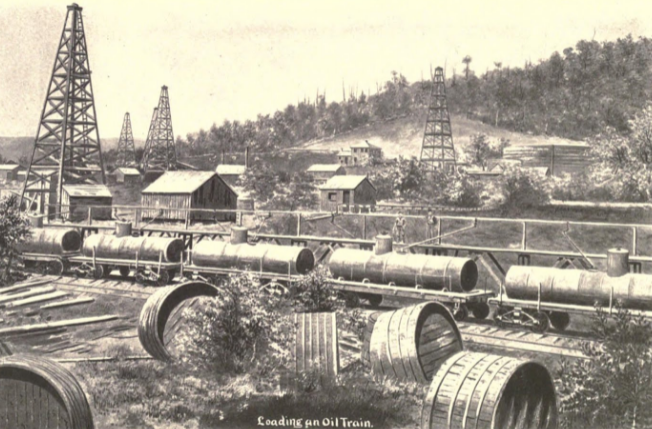The Petroleum Industry
Although the first oil, discovered by the Chinese in 600 B.C. (and was transported in
pipelines made from bamboo), never came into widespread use .
That is until Colonel Drake’s discovery of oil in western Pennsylvania in 1859 and the Spindletop discovery in Texas in 1901 set the stage for the new oil economy. Petroleum was much more adaptable and flexible than coal. Additionally, the kerosene that was refined originally from crude provided a reliable and relatively inexpensive alternative to “coal-oils” and whale oil for fueling lamps. Most of the other products were discarded.
With the technological breakthroughs of the 20th century, oil emerged as the preferred energy source. The key drivers of that transformation were the electric light bulb and the automobile.
Automobile ownership and demand for electricity grew exponentially and, with them, the demand for oil. By 1919, gasoline sales exceeded those of kerosene. Oil-powered ships, trucks and tanks, and military airplanes in World War I proved the role of oil as not only a strategic energy source, but also a critical military asset.
Prior to the “roaring 20s”, the natural gas that was produced along with oil was burned (or flared) as a waste by-product. Eventually, gas began to be used as fuel for industrial and residential heating and power. The Chemical industry, upon
which so much of our society depends came out these earlier advances.
My Stories
In this fascinating corner of my storytelling tent, I’ll take you through aspects of Oil & Gas exploration and development. From oilfields to refineries and how they get to market, I’ll share with you stories not heard before of the interesting and often quirky people, equipment, locations, and events associated with the Petroleum
industry.
